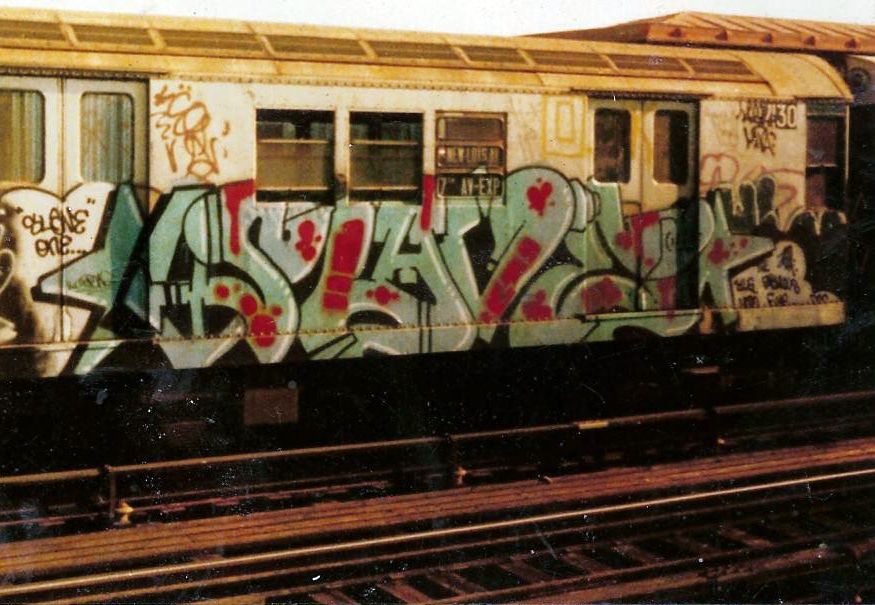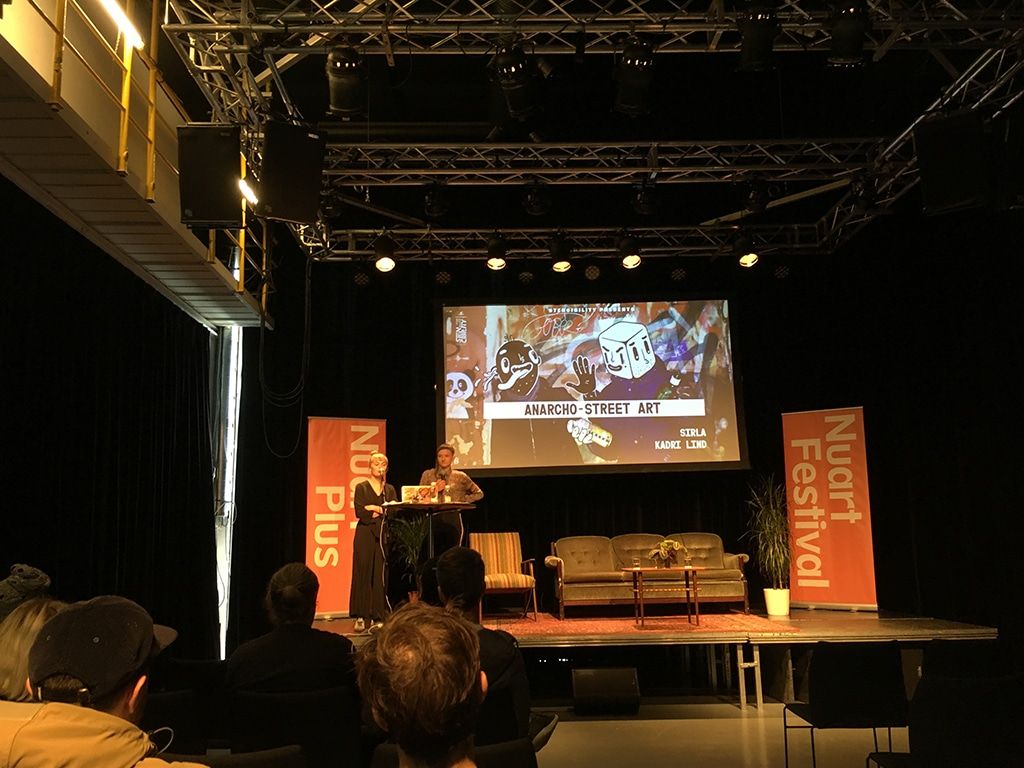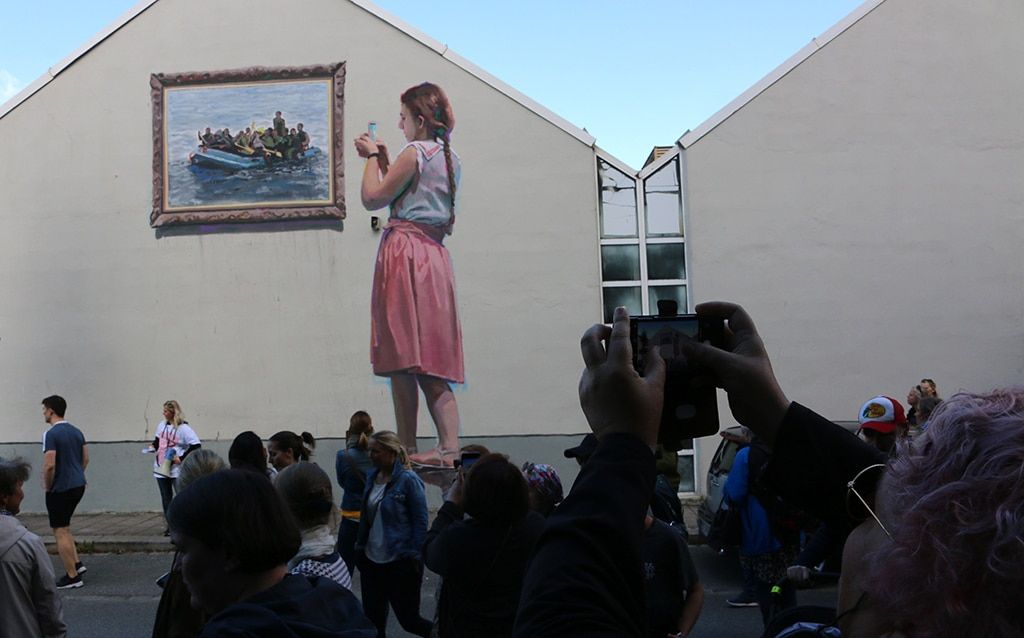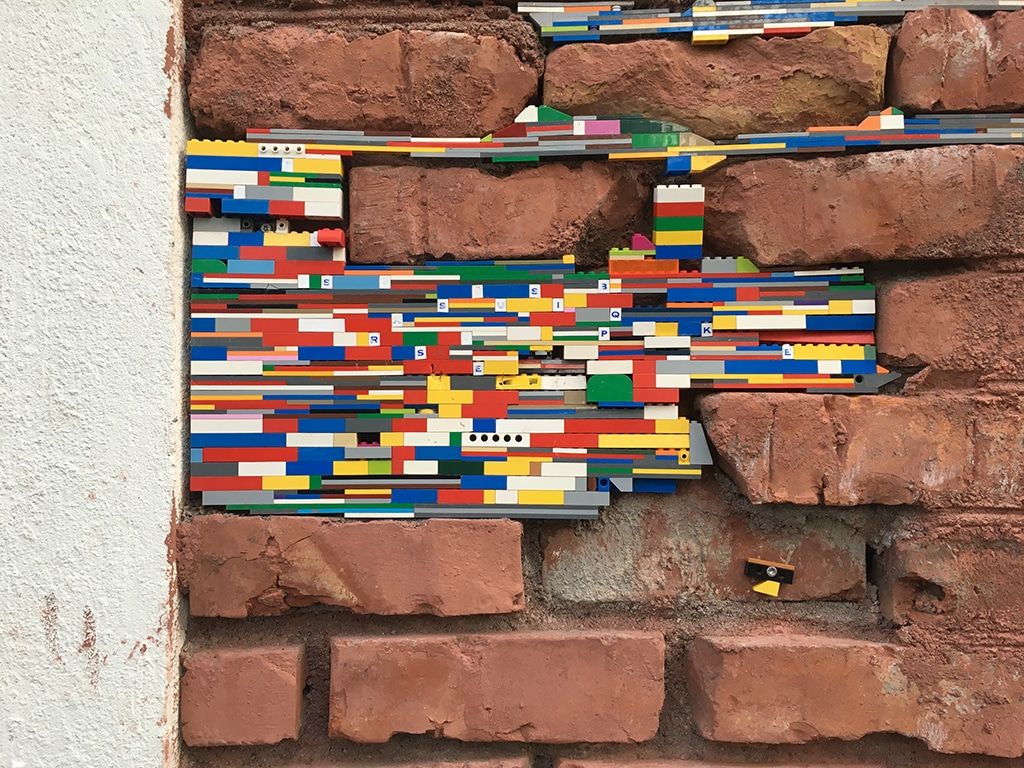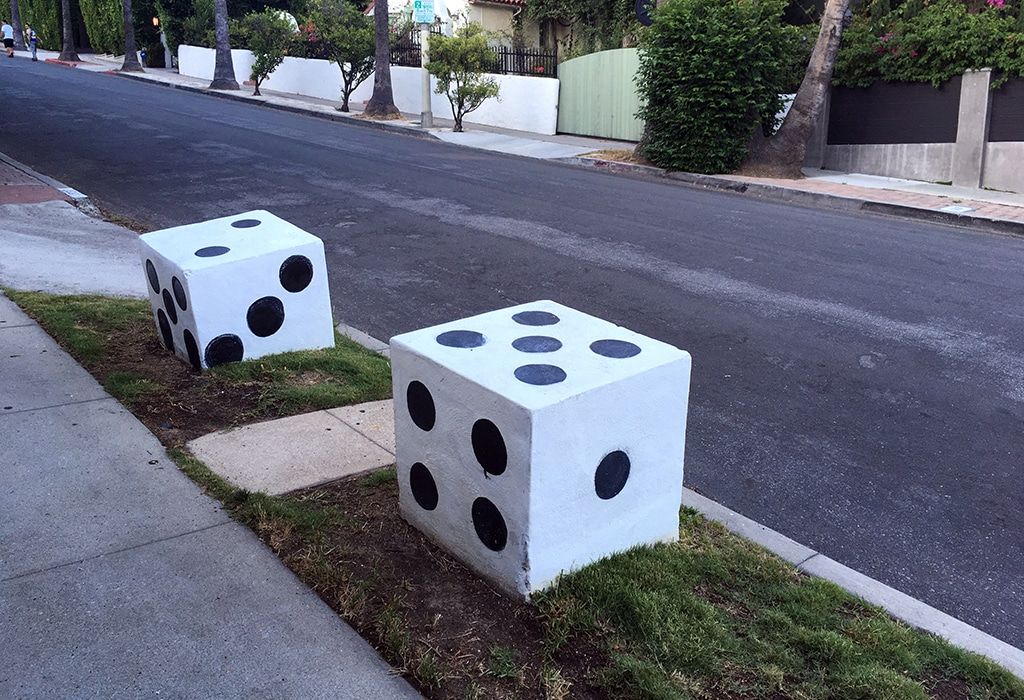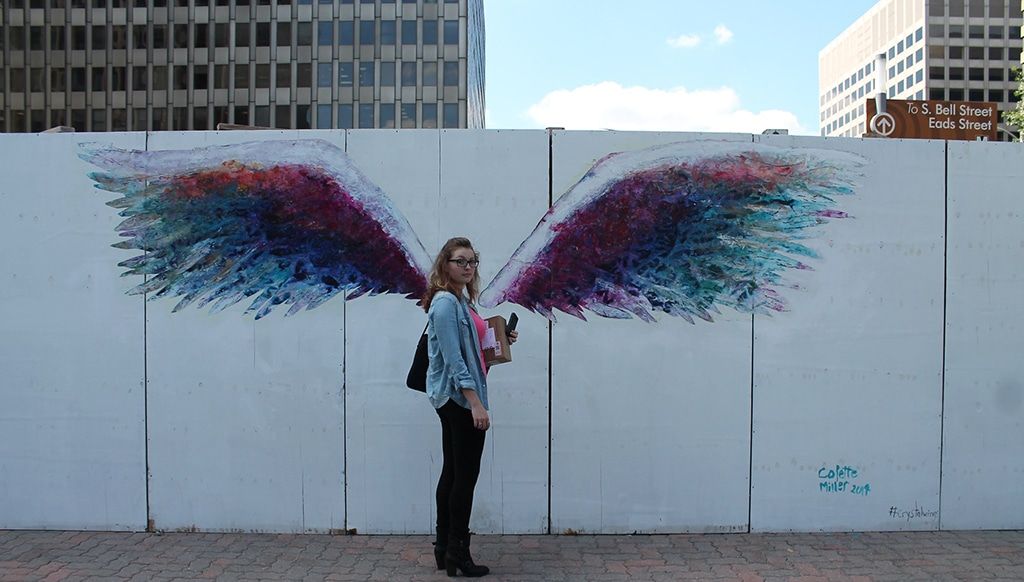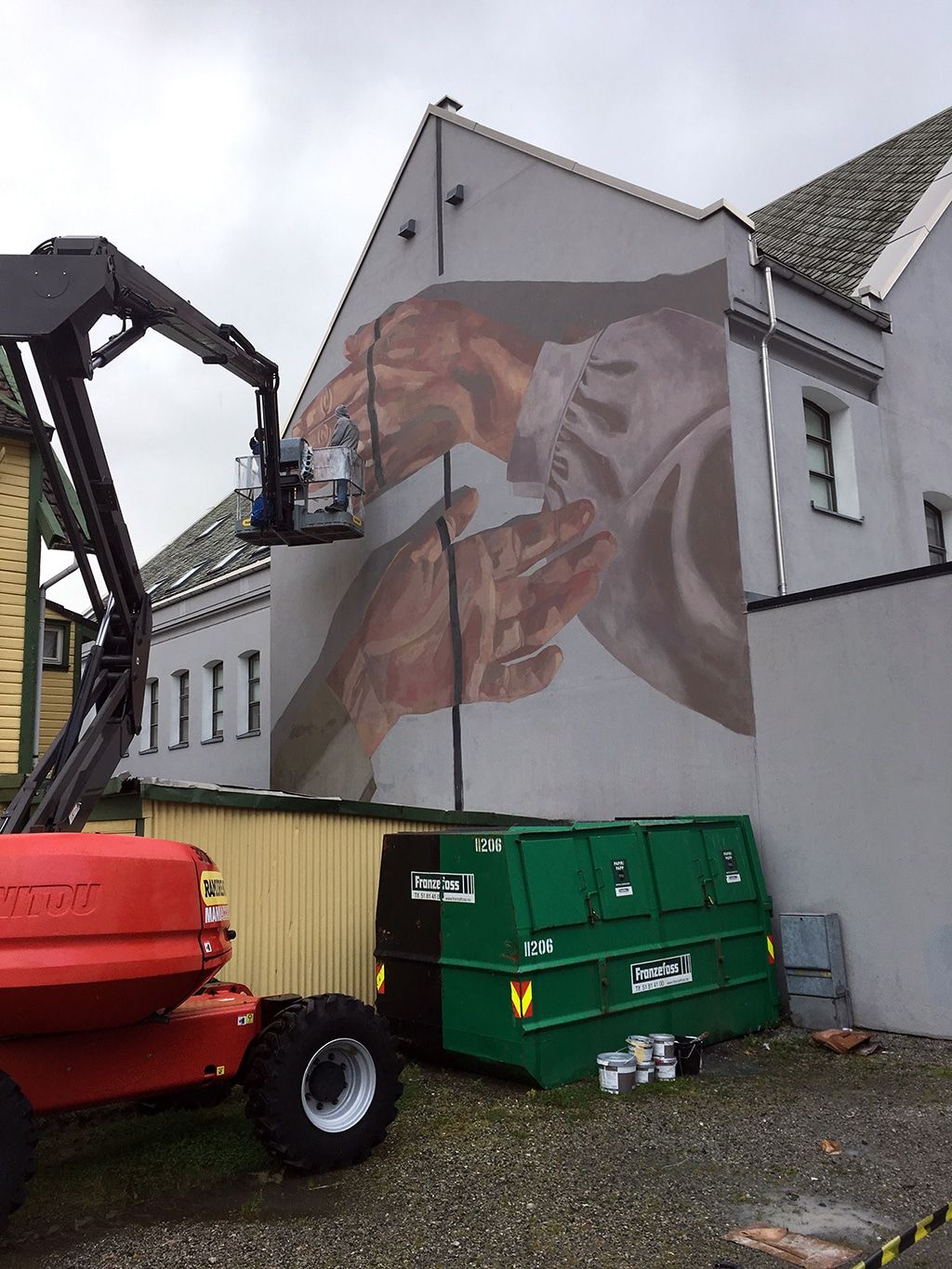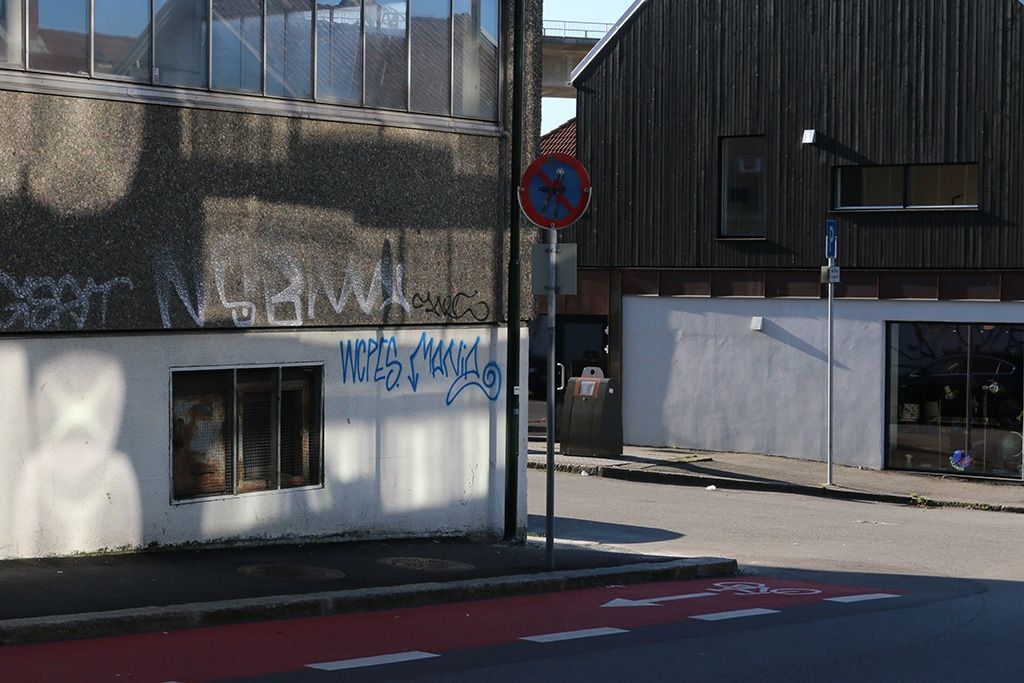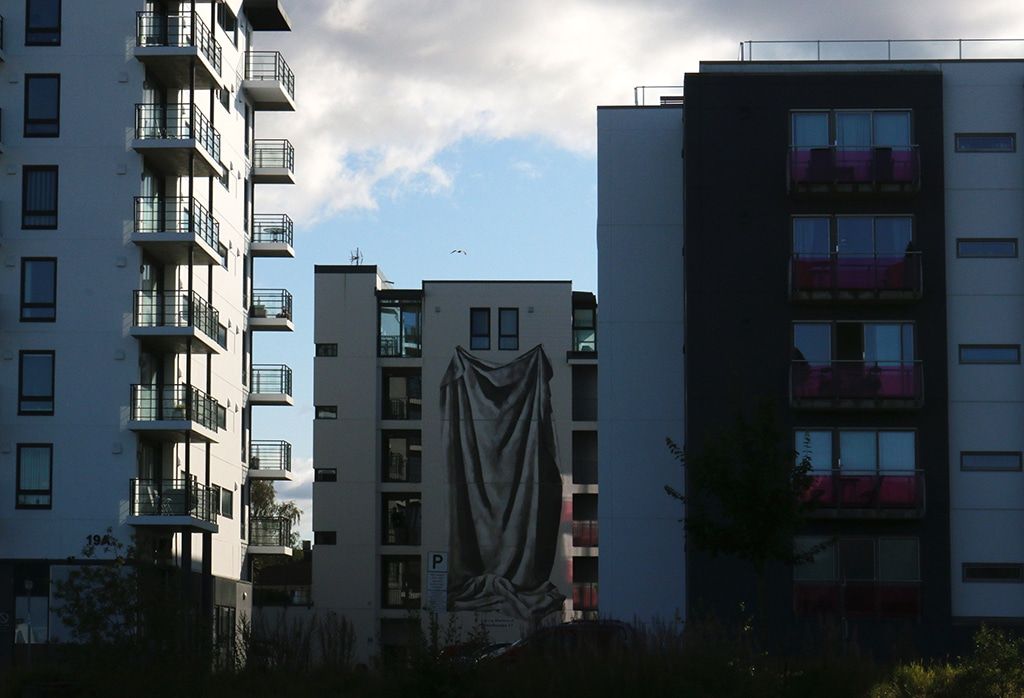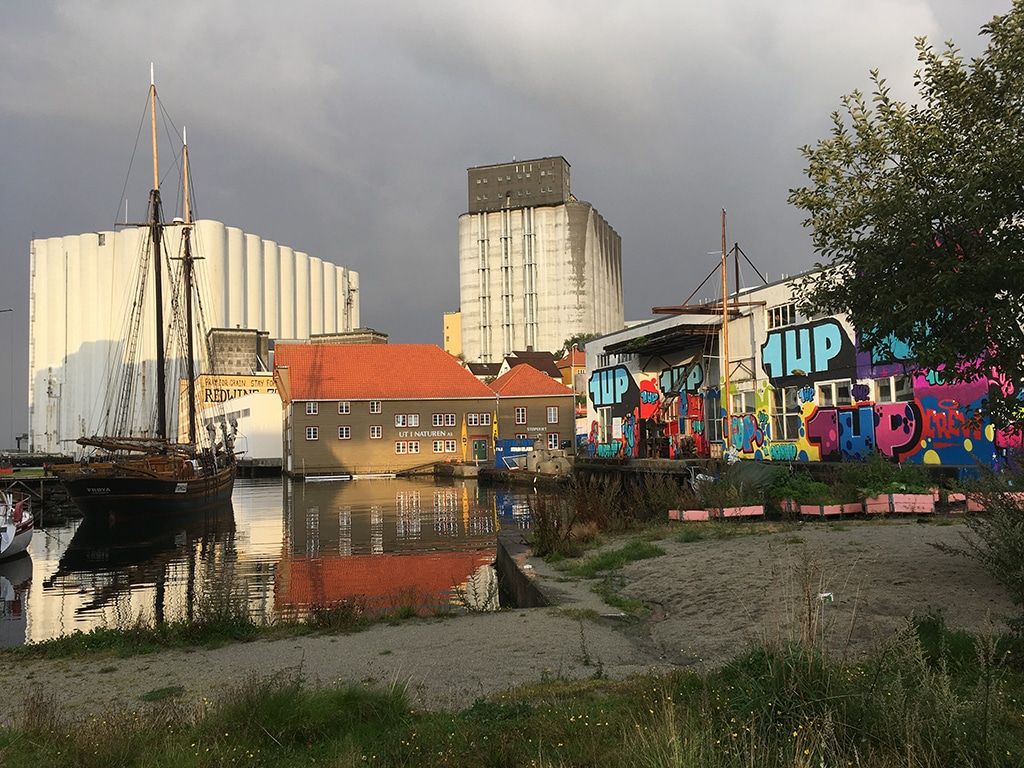New visibility, via Instagram and other image-based social media platforms, has helped expand the repertoire of street artists, but also made for repetition and cliché. Publics expect to interact with pieces, and many are made specifically to be photographed with, like the hash-taggable “angel wings” that have popped up in dozens of cities. NuArt doesn’t trade in works like this, but some themes will seem familiar, if only because of certain conventions in the street art form. “Beholders,”a work by the Spanish artist Jofre Oliveras on Støperigata, is itself an acerbic comment on the passivity of this Pinterest-collecting culture: the mural shows a woman in a sundown skirt and jelly sandals photographing a painting in a fancy frame, it depicts a migrant-laden boat on the Medditerranean. The tableau is especially well executed, from the high polish of the floor it’s clear that she’s standing in a gallery space or art fair, taking in the flight of migrants for a minute but ready to move on soon. Everyone’s indicted: the painter benefiting from a work on the crises, the woman excited to share the work on her feed, and us the passive viewers of the entire scene. But there’s something that feels a little too clever about the whole thing. Like Banksy, who also uses a classic frame as a visual device in many works, Oliveras ties up all the visual loose ends, but, in so doing, he leaves us with little emotional breathing room and scarce outlets for productively rethinking or acting on the migrant crisis in Europe. When I passed the work in a walking tour all of the participants seemed doomed to repeat the cycle, whipping out their phones to take photos of the photographer lady in her pink dress.


